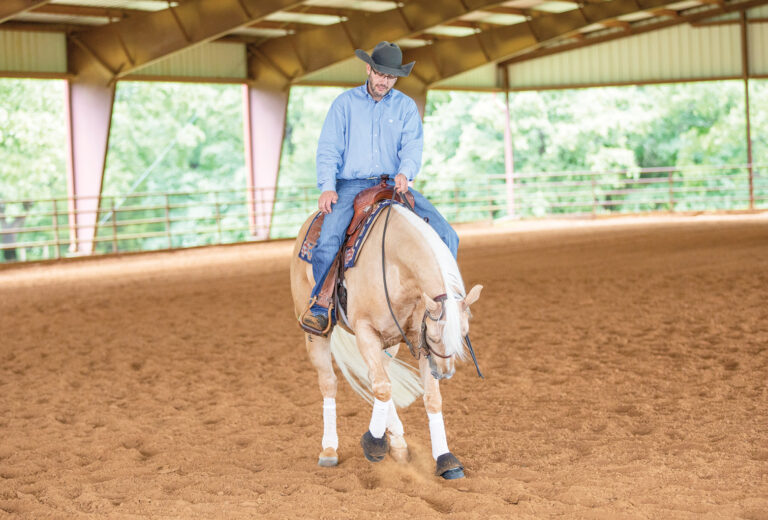If you prefer a little boost when mounting, why not get your horse to help you? A mounting block is fine, but there’s not always one handy. If you teach your horse to align himself with the fence at your cue, you’ve always got an easy way to step aboard.
The method I’m going to show you is also excellent for preparing a young horse to be mounted for the first time. You can desensitize him to having a human above his eye level and pressure on his back, all while you’re securely perched on the fence.
To begin, you’ll stand on the fence and send your horse back and forth in front of you. Then, you’ll encourage him to stop and face you, perpendicular to the fence. By bumping upward on the lead until he begins to swing his hindquarters, you’ll teach him to align himself parallel to the fence. Once he’s standing next to the fence, you’ll be able to slip aboard–or begin desensitizing a young horse to being mounted.
To Get the Most from this Lesson
- Outfit your horse in a rope halter with a lead that’s at least 14 feet long. I prefer my own halters, which have extra knots on the noseband for improved responsiveness, but any of the stiffer rope halters will do. You’ll also need a training stick or a dressage whip. (In these photos, I’m demonstrating how to teach this lesson to an unbroke horse. If you’re working with a trained horse, you can go ahead and saddle him and put his bridle on under the halter.)
- Prepare your pupil with my “longeing for respect” (Practice Pen, Horse & Rider, April-June 2004) to get him settled and focused on you.
- Ideally, use a board or pipe fence that’s about six feet high (a shorter fence, such as the one in these photos, provides less support and requires more balance on your part). If you want him to go to your left, hold the lead in your left hand and point with that hand, while holding your stick or whip in the other hand. To go the other way, switch hands. Inset: If need be, use your stick or dressage whip to encourage your horse to move back and forth promptly, as I am here. (Because the bumping has been continuous to this point, your horse will understand that the cessation of it means it’s a reward for having done the right thing–stepping over with his hind end.) If your timing is accurate, he’ll quickly learn to recognize the upward bumping as a request to move his hindquarters over towards the fence.
–Photos by Darrell Dodds
Clinton Anderson, the undefeated champion of the Road to the Horse colt-starting challenge, is the host of Downunder Horsemanship, a popular weekly training program on RFD-TV. He lives in Belle Center, Ohio. Clinton regularly travels around the country, presenting horsemanship clinics and headlining at horse expos.
This article originally appeared in the September 2005 issue of Horse & Rider magazine.






